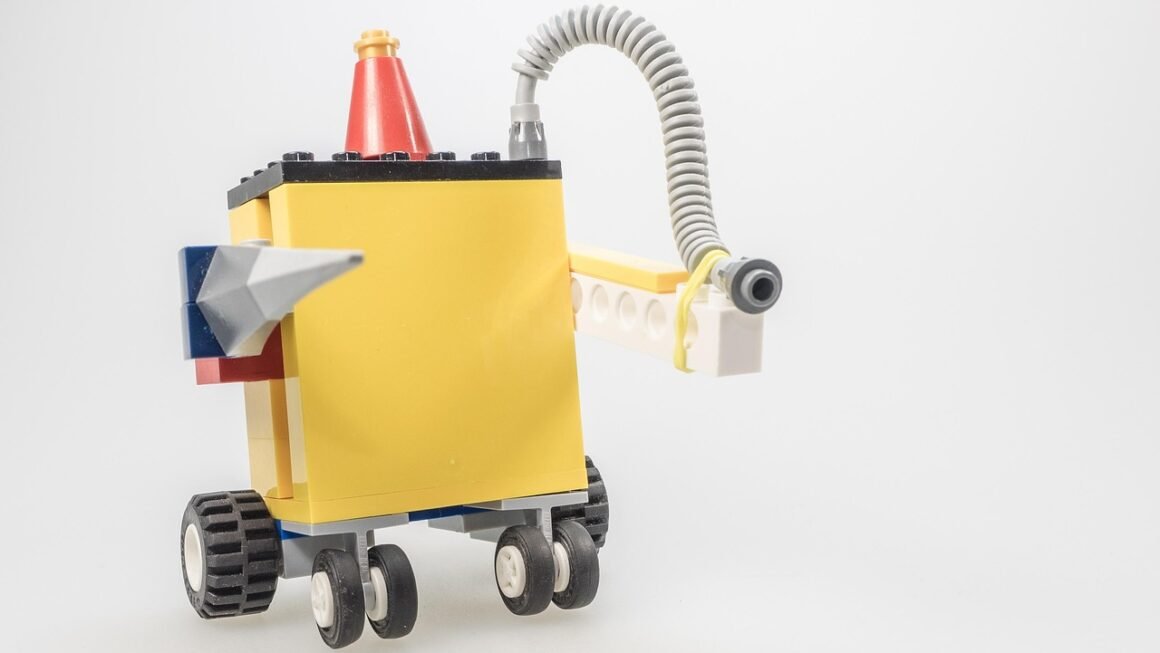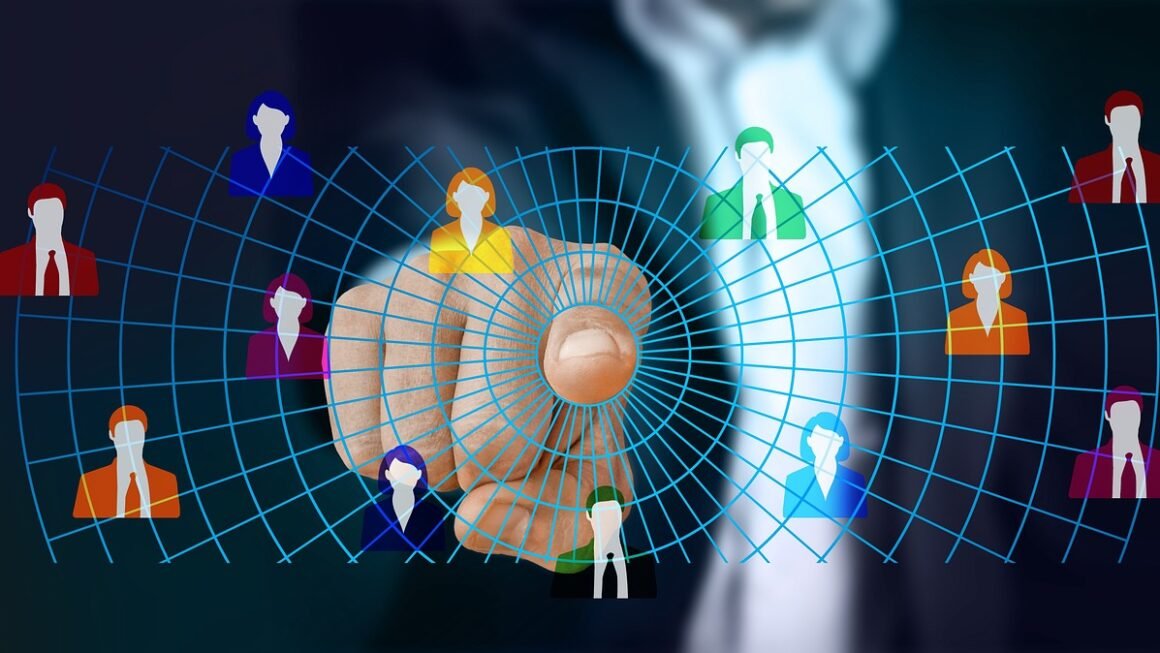Autonomous systems are rapidly transforming industries from manufacturing and transportation to healthcare and finance. These intelligent systems, capable of operating without direct human control, are reshaping our world, offering increased efficiency, reduced costs, and enhanced capabilities. Understanding the nuances of autonomous systems is crucial for navigating the future of work and technology. This blog post delves into the core aspects of autonomous systems, exploring their definition, components, applications, challenges, and future trends.
What are Autonomous Systems?
Defining Autonomy
At its core, an autonomous system is a system that can perform tasks and make decisions independently, without continuous human intervention. Autonomy isn’t an all-or-nothing concept. It exists on a spectrum, ranging from systems with minimal automated assistance to fully self-governing machines. A key differentiator is the system’s ability to perceive its environment, reason about it, and then act upon it to achieve a specific goal.
Key Characteristics of Autonomous Systems
Autonomous systems exhibit several key characteristics:
- Perception: The ability to gather information from the environment through sensors (e.g., cameras, lidar, radar).
- Decision-Making: The capacity to process sensory data, analyze situations, and make informed decisions. This often involves algorithms, AI, and machine learning.
- Action: The capability to execute actions based on decisions, influencing the environment (e.g., controlling movement, adjusting settings).
- Learning: The ability to improve performance over time through experience and data. This is often facilitated through machine learning models.
- Adaptation: The aptitude to adjust to changing conditions and unexpected events without requiring human reprogramming.
Levels of Autonomy
The Society of Automotive Engineers (SAE) has defined six levels of driving automation, from 0 (No Automation) to 5 (Full Automation). While focused on automotive, this framework provides a useful way to understand increasing levels of autonomy in any system:
- Level 0: No Automation: The human driver performs all driving tasks.
- Level 1: Driver Assistance: The system provides limited assistance, such as adaptive cruise control or lane keeping assist. The driver must remain engaged and monitor the environment.
- Level 2: Partial Automation: The system can control both steering and acceleration/deceleration under certain conditions. The driver must still monitor the environment and be prepared to intervene.
- Level 3: Conditional Automation: The system can perform all driving tasks under specific conditions (e.g., on highways). The driver must be ready to intervene when the system requests.
- Level 4: High Automation: The system can perform all driving tasks under certain conditions, even if the driver does not respond to a request to intervene.
- Level 5: Full Automation: The system can perform all driving tasks under all conditions. No human driver is required.
The Core Components of Autonomous Systems
Sensors and Perception
Sensors are the eyes and ears of autonomous systems, providing crucial data about the environment. Common sensor types include:
- Cameras: Capture visual data for object recognition, lane detection, and scene understanding. Examples include monocular, stereo, and thermal cameras.
- Lidar (Light Detection and Ranging): Uses laser light to create a 3D map of the surroundings, providing accurate distance measurements.
- Radar (Radio Detection and Ranging): Uses radio waves to detect objects, especially useful in adverse weather conditions.
- GPS (Global Positioning System): Provides location and navigation information.
- Inertial Measurement Units (IMUs): Measures acceleration and angular velocity, helping to track motion and orientation.
- Ultrasonic Sensors: Used for short-range detection of objects, often used in parking assist systems.
Practical Tip: Choosing the right combination of sensors depends on the specific application and environmental conditions. Redundancy is crucial for safety-critical applications – using multiple sensors to provide overlapping information helps ensure reliable perception.
Algorithms and Artificial Intelligence
The data gathered by sensors is processed by sophisticated algorithms, often incorporating artificial intelligence (AI) and machine learning (ML) techniques. These algorithms enable the system to:
- Object Detection and Recognition: Identify and classify objects in the environment (e.g., pedestrians, vehicles, traffic signs).
- Path Planning: Determine the optimal route to reach a destination, considering obstacles and constraints.
- Decision-Making: Make choices based on the perceived environment and the system’s goals.
- Control: Translate decisions into actions, controlling actuators and other components.
Example: Self-driving cars rely heavily on deep learning models to process images and videos from cameras, allowing them to identify and react to pedestrians, traffic lights, and other vehicles. These models are trained on massive datasets of real-world driving scenarios.
Actuators and Control Systems
Actuators are the components that allow the autonomous system to interact with the environment. Examples include:
- Motors: Control movement, such as wheels in a vehicle or robotic arms in a manufacturing plant.
- Hydraulic Systems: Provide power for heavy-duty applications, such as construction equipment.
- Pneumatic Systems: Use compressed air to control movement, often used in automation systems.
- Steering Systems: Control the direction of movement in vehicles.
- Braking Systems: Control deceleration and stopping.
Control systems regulate the actuators, ensuring that the system executes actions accurately and safely. Feedback loops are used to monitor performance and make adjustments as needed.
Applications of Autonomous Systems Across Industries
Transportation and Logistics
Autonomous vehicles are revolutionizing transportation and logistics. Examples include:
- Self-Driving Cars: Aim to provide safer and more efficient transportation for individuals. Companies like Waymo and Tesla are leading the development of autonomous driving technology.
- Autonomous Trucks: Can improve efficiency in long-haul trucking, reducing driver fatigue and fuel consumption.
- Delivery Drones: Offer faster and more cost-effective delivery of goods, especially in urban areas. Companies like Amazon and UPS are exploring the use of delivery drones.
- Autonomous Ships: Can improve efficiency and safety in maritime transportation. Projects are underway to develop autonomous cargo ships.
According to a report by McKinsey, autonomous driving could generate up to $400 billion in revenue by 2030.
Manufacturing and Robotics
Autonomous robots are transforming manufacturing and other industries:
- Industrial Robots: Perform repetitive tasks with high precision and speed, improving efficiency and reducing costs.
- Collaborative Robots (Cobots): Work alongside humans, assisting with tasks and improving safety.
- Warehouse Automation: Autonomous mobile robots (AMRs) automate material handling and order fulfillment in warehouses.
- Inspection Robots: Inspect equipment and infrastructure for defects, improving safety and preventing failures.
Healthcare
Autonomous systems are also making inroads in healthcare:
- Surgical Robots: Assist surgeons with complex procedures, improving precision and minimizing invasiveness.
- Automated Medication Dispensing: Ensures accurate and timely medication delivery to patients.
- Robotic Assistants: Help patients with daily tasks and provide companionship.
- Diagnostic Robots: Analyze medical images and other data to assist in diagnosis.
Agriculture
Autonomous systems are increasing efficiency and sustainability in agriculture:
- Autonomous Tractors: Perform planting, harvesting, and other tasks without human intervention.
- Drones for Crop Monitoring: Collect data on crop health and identify areas that need attention.
- Robotic Weeding: Remove weeds without the use of herbicides, reducing environmental impact.
Challenges and Considerations
Safety and Reliability
Ensuring the safety and reliability of autonomous systems is paramount. This requires rigorous testing and validation, as well as the development of robust safety mechanisms. Key considerations include:
- Fail-Safe Design: Systems must be designed to fail safely in the event of a malfunction.
- Redundancy: Using multiple sensors and actuators to provide backup in case of failure.
- Cybersecurity: Protecting systems from cyberattacks that could compromise their safety and functionality.
- Ethical Considerations: Addressing ethical dilemmas that may arise in autonomous decision-making (e.g., the “trolley problem” in self-driving cars).
Regulatory and Legal Frameworks
The development and deployment of autonomous systems require clear regulatory and legal frameworks. This includes:
- Liability: Determining who is responsible in the event of an accident involving an autonomous system.
- Data Privacy: Protecting the privacy of data collected by autonomous systems.
- Certification and Standards: Establishing standards for the safety and performance of autonomous systems.
Public Acceptance and Trust
Building public acceptance and trust is crucial for the widespread adoption of autonomous systems. This requires transparency, education, and open communication about the benefits and risks of these technologies.
Job Displacement
The automation enabled by autonomous systems raises concerns about job displacement. Addressing this challenge requires:
- Retraining and Upskilling: Providing workers with the skills needed to adapt to new roles.
- Creating New Jobs: Developing new industries and jobs related to the design, development, and maintenance of autonomous systems.
- Social Safety Nets: Strengthening social safety nets to support workers who are displaced by automation.
Future Trends in Autonomous Systems
Increased Autonomy and Intelligence
Autonomous systems are becoming increasingly intelligent and capable, thanks to advances in AI and machine learning. Future trends include:
- Improved Perception: More accurate and reliable sensing technologies.
- Advanced Decision-Making: More sophisticated algorithms for planning and decision-making.
- Swarm Intelligence: Autonomous systems working together in coordinated groups.
- Human-Robot Collaboration: More seamless and intuitive interaction between humans and robots.
Edge Computing and Decentralization
Edge computing, which involves processing data closer to the source, is enabling more responsive and efficient autonomous systems. This is especially important for applications that require real-time decision-making.
Integration with the Internet of Things (IoT)
The integration of autonomous systems with the Internet of Things (IoT) is creating new opportunities for data collection, analysis, and control. This allows for more connected and intelligent systems.
New Applications and Industries
Autonomous systems are expected to expand into new applications and industries, including:
- Space Exploration: Autonomous robots exploring other planets and moons.
- Underwater Exploration: Autonomous underwater vehicles (AUVs) exploring the ocean depths.
- Disaster Response: Autonomous robots assisting in search and rescue operations.
Conclusion
Autonomous systems are poised to revolutionize our world, offering significant benefits across various industries. While challenges remain regarding safety, regulation, and societal impact, ongoing research and development are paving the way for a future where these intelligent systems play an increasingly important role. Understanding the fundamental principles, applications, and future trends of autonomous systems is crucial for individuals and organizations alike to navigate and leverage this transformative technology.



